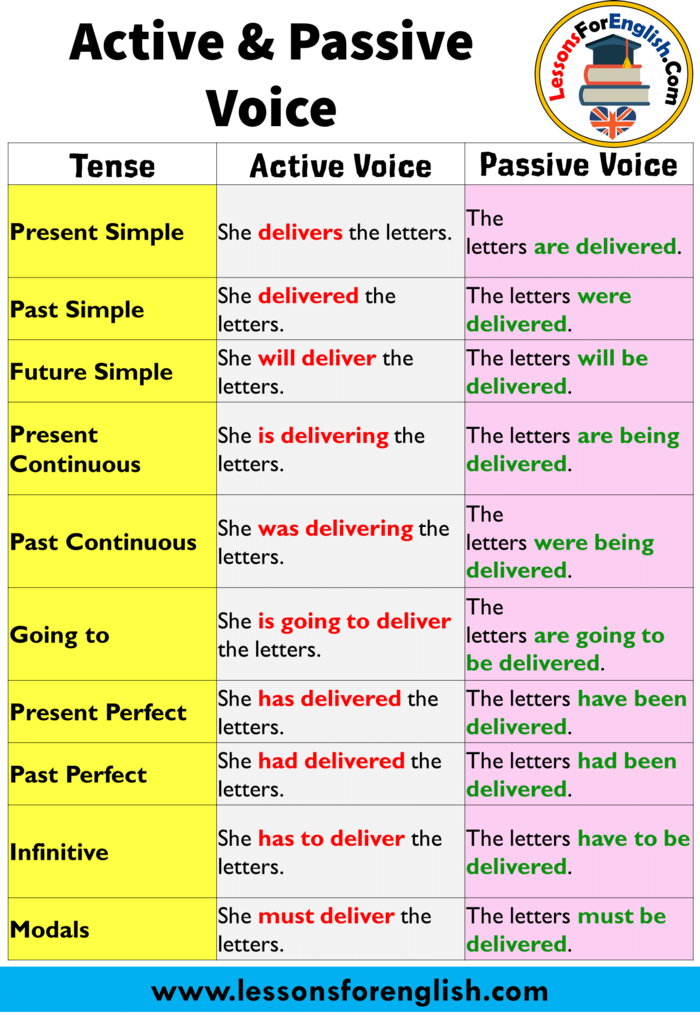

In the first two examples, the verbal phrase includes a present instead of a past participle. The following sentences are not in passive voice: While a form of “to be” usually appears in passive verb phrases, it does not signify passive voice by itself. The verb “to be” has eight basic forms: is, are, was, were, been, being, be, and am. Students often mistakenly identify forms of the verb “to be” with passive voice. Helpful Hint: Sometimes an author writes in passive voice but signals the actor of a sentence with the preposition “by.” For example, “the Confederacy was defeated by the Union Army in 1865.” So, another way to think of this sentence is, “The act of defeating the Confederacy was completed in 1865.” Let’s take a look at the second example, “The Confederacy was defeated in 1865.” This sentence is passive because its subject, “The Confederacy,” receives the action of the verb phrase, “was defeated.” In this verb phrase, a past tense form of the verb “to be”-in this case “was”-combines with the past participle of the verb “to defeat.” Past participles often end in “ed” and signal that a verb’s action is completed. Why are these sentences in passive voice? The National Industrial Recovery Act was declared unconstitutional in 1935. In 1885, a major strike against Jay Gould’s Southwestern Railroad System had been won by the Knights of Labor. Mistakes were made with the passive voice. In the following sentences the passive verb is in bold type: 1 So, a sentence in which the subject performs the verb’s action is in active voice, and a sentence in which the subject receives the force or action of the verb is in passive voice. – that is, whether the subject performs or receives the action of the verb.
#ACTIVE VS PASSIVE VOICE IN RESEARCH WRITING HOW TO#
Understand why historians write in active voiceīefore you can eliminate passive voice, you must first learn what it is and how to locate it in your writing.Īccording to The Chicago Manual of Style, “Voice shows whether the subject acts. Active verbs, on the other hand, focus attention on actors, bringing clarity and forcefulness to your prose.Īvoid common mistakes involving passive voice

That’s because passive verbs make your writing boring and confuse your reader. Use the passive voice when it is more important to focus on the recipient of an action than on who performed the action, such as when describing an experimental setup.A professor or graduate instructor has probably cautioned you to eliminate passive voice from your writing at one time or another.Use the active voice as much as possible to create direct, clear, and concise sentences, especially when you are writing about the actions of people.However, writers often overuse the passive voice. If the subject is omitted (e.g., “the cookies were eaten”), it may result in confusion about who performed the action (did the children eat the cookies, or was it the dog?).īoth the active and the passive voice are permitted in APA Style. Passive voic e: the object of the verb is followed by the verb (usually a form of “to be” + past participle + the word “by”) and then the subject (e.g., “the cookies were eaten by the children”).Active voice: the subject of a sentence is followed by the verb and then the object of the verb (e.g., “the children ate the cookies”).Voice describes the relationship between a verb and the subject and object associated with it.


 0 kommentar(er)
0 kommentar(er)
